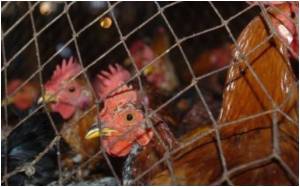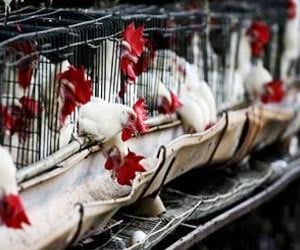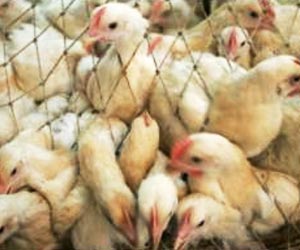Bird flu the turn of crows and hawks now. Reports of these birds dying with bird flu symptoms in some areas of the bird flu-hit districts of Birbhum, Murshidabad and South Dinajpur.

It could also be that as the virus has hit flying birds , chickens are now dying in areas outside those initially identified .
About 2,000 chickens had died in Jamuria, Kirnahar and Barwan in Burdwan, Birbhum and Murshidabad districts on Thursday. State Director General of Health Services Sanchita Bakshi was quoted: “Deaths of several birds and hawks were reported in the bird flu-affected villages in Rampurhat. We are keeping a watch on how these birds are dying.”
Dr Amaresh Chatterjee, a former director in the ARD department was reported : “It is a matter of concern once crows and hawks are affected with the H5N1 virus. Droplets of affected birds spread the virus rapidly everywhere — and even in ponds and water bodies. It is not possible to confine these birds in cages, as is possible with poultry birds.”
According to a World Health Organization report, the H5N1 bird flu virus may sometimes stick to surfaces or get kicked up in fertilizer dust . This can result in people getting infected.
A review by the WHO team of all known human cases of avian influenza, which has infected 350 people in 14 countries and killed 217 of them since 2003 has found that 25 per cent of cases have no explanation.
Advertisement
It could also be that small particles of virus-contaminated fluid stick to surfaces, or perhaps fertilizer made from infected bird feces somehow carried the virus into people's noses or mouths, says the report. "It is unknown whether influenza A (H5N1) virus infection can begin in the human gastrointestinal tract. In several patients, diarrheal disease preceded respiratory symptoms, and virus has been detected in feces”, it adds.
H5N1 is considered endemic in parts of Asia, including Indonesia, Africa and the Middle East. It appears frequently in Europe and has prompted the slaughter of hundreds of millions of chickens.
Yet, the fear remains that the virus could mutate into a strain that passes easily from one person to another, setting off a pandemic that could kill millions of people in the space of a few months.
"After exposure to infected poultry, the incubation period generally appears to be 7 days or less, and in many cases this period is 2 to 5 days," the WHO team gives.
"In clusters in which limited, human-to-human transmission has probably occurred, the incubation period appears to be approximately 3 to 5 days, although in one cluster it was estimated to be 8 to 9 days."
The flu causes severe pneumonia and tests suggest that it rarely or never infects people without causing symptoms.
Avian flu kills on average within nine to 10 days and has killed 61 per cent of victims.
Health experts note that quick use of antiviral drugs can save lives. Tamiflu, the drug of choice to treat influenza is made by Roche Holdings AG and Gilead Sciences under the generic name oseltamivir.
Source-Medindia
ANN/S







